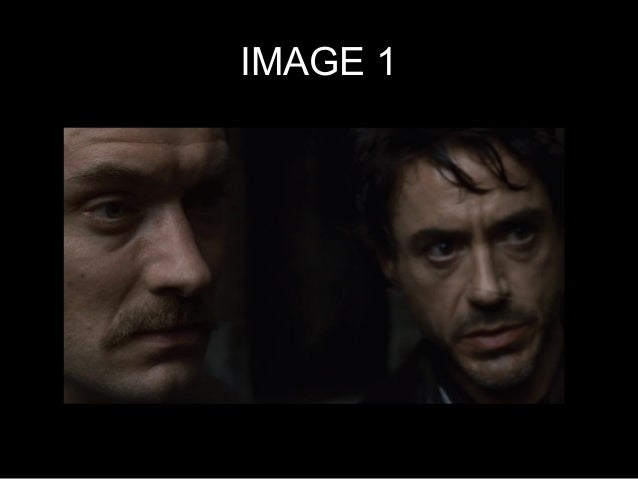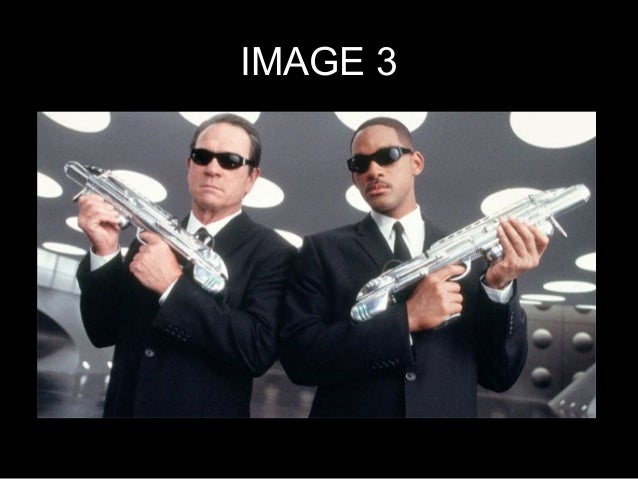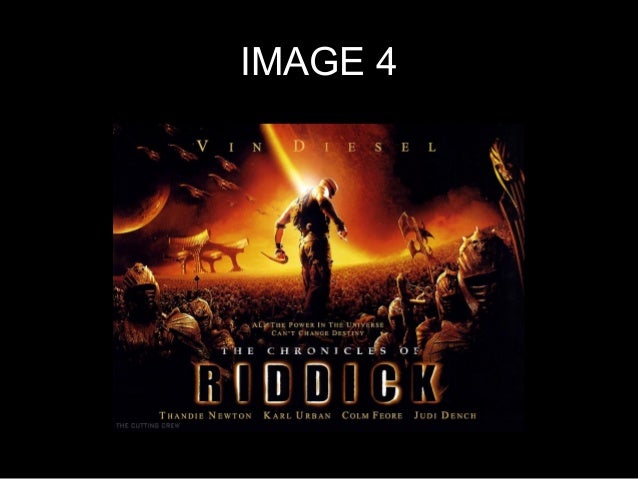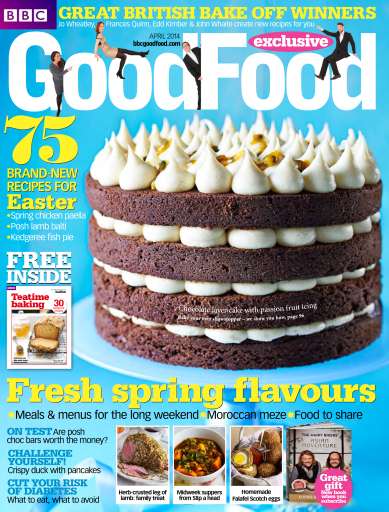Monday 25 September 2017
George Gerbner
His theory is known as the Cultivation Theory.
Gerbner believed in the idea that exposure to repeated patterns over a long period of time can influence a persons perception. It relates to dominant ideologies, whereby cultivation reinforces mainstream values in a persons mind.
The idea suggests that messages conducted by the media are not directly 'injected' (Hypodermic Needle) into the audience, but instead are built up by the repetition of the message. This will then instate hegemony (dominance).
It could be seen that his ideas relate to Altusser, and his idea of hearing and seeing similar messages in the media, where the ideology can make the audience passive.
Gerbner believed in the idea that exposure to repeated patterns over a long period of time can influence a persons perception. It relates to dominant ideologies, whereby cultivation reinforces mainstream values in a persons mind.
The idea suggests that messages conducted by the media are not directly 'injected' (Hypodermic Needle) into the audience, but instead are built up by the repetition of the message. This will then instate hegemony (dominance).
It could be seen that his ideas relate to Altusser, and his idea of hearing and seeing similar messages in the media, where the ideology can make the audience passive.
Albert Bandura
He looked at the way media can have a direct influence of its audience, and what it can do to their behaviour.
He argues that violence is prevalent (widespread) in a range of media, such as various TV programmes. It can expose violence, enabling us to perceive and believe that violence is an acceptable form of behaviour and a normal way to conduct ourselves in certain situations. He called this the 'modelling' of behaviour.
In 1961, Bandura illustrated the Bobo Doll experiment. It was a way for him to observe the behaviour of children and the way they behave in different ways. He believed that certain people on the media, at school or on TV, can be seen as suitable models to follow, resulting in the imitation of their actions. Children pay attention to some people and encode their behaviour, good or bad. Therefore, he wanted to conduct an experiment to investigate whether certain behaviours (aggression) could be acquired in children based on observation and imitation.
His results concluded that the children observing the most aggression had become the most aggressive back, but the other children had a less aggressive response. Also, he noticed that boys became more physically aggressive than the girls, but both genders had little difference between verbal aggression.
Stuart Hall
Stuart Hall came up with the concept of the Reception Theory.
In his theory, it states that the media encode messages, which the audience will later decode.
Different audiences will decode the messages or values of the media in different ways-even though it sometimes isn't the way the producer intends the context to be decoded.
The context can be perceived by the audience in three different ways...
1)dominant
2)negotiated
3)oppositional
For example, if you were to watch an advert on a new car that will be launching, you may take the 'dominant' approach, which would be taking the advert seriously and in the way the producer wants you to. You agree with the ideology, providing a positive outcome for the company, making their advertisement a success and the rise in people wanting to buy their car.
Although, if you are 'negotiated', it means you are unsure or reluctant to buy the car, but are still considering the benefits. You are essentially in compromise between dominant and oppositional. You are happy to accept the message, but you are imputing your own views. There is no agreement or disagreement, as you think the car looks good, but are not willing to spend the money they want you to pay for it. Even though you may not buy it, it is a bonus for the producer, as their message has been decoded in the correct way.
On the other hand, an 'oppositional' audience member, is a person who rejects the message completely, creating an entirely individual view, opposite to the intended message. If you came across the car advert, you wouldn't believe what they're trying to sell you, thinking they are lying or that the price is too much for a car. Therefore, the company and producer will get a negative response, based on your rejection of their ideologies and message.
In his theory, it states that the media encode messages, which the audience will later decode.
Different audiences will decode the messages or values of the media in different ways-even though it sometimes isn't the way the producer intends the context to be decoded.
The context can be perceived by the audience in three different ways...
1)dominant
2)negotiated
3)oppositional
For example, if you were to watch an advert on a new car that will be launching, you may take the 'dominant' approach, which would be taking the advert seriously and in the way the producer wants you to. You agree with the ideology, providing a positive outcome for the company, making their advertisement a success and the rise in people wanting to buy their car.
Although, if you are 'negotiated', it means you are unsure or reluctant to buy the car, but are still considering the benefits. You are essentially in compromise between dominant and oppositional. You are happy to accept the message, but you are imputing your own views. There is no agreement or disagreement, as you think the car looks good, but are not willing to spend the money they want you to pay for it. Even though you may not buy it, it is a bonus for the producer, as their message has been decoded in the correct way.
On the other hand, an 'oppositional' audience member, is a person who rejects the message completely, creating an entirely individual view, opposite to the intended message. If you came across the car advert, you wouldn't believe what they're trying to sell you, thinking they are lying or that the price is too much for a car. Therefore, the company and producer will get a negative response, based on your rejection of their ideologies and message.
Steve Neale
STEVE NEALE (1980)
He follows the belief that genre relies on repetition and differences.
For example, in some films the elements may be orchestrated in an unfamiliar way, or different elements may be introduced. This helps to create popular cinematic films, and to help create genre for these films in a way that it will attract a good audience.
(1990)
He argues that Hollywood's regime performs with two inter-related functions.
The first is to guarantee meanings and pleasures for the audiences; the second is to provide cognitive collateral against innovation and difference.
He follows the belief that genre relies on repetition and differences.
For example, in some films the elements may be orchestrated in an unfamiliar way, or different elements may be introduced. This helps to create popular cinematic films, and to help create genre for these films in a way that it will attract a good audience.
(1990)
He argues that Hollywood's regime performs with two inter-related functions.
The first is to guarantee meanings and pleasures for the audiences; the second is to provide cognitive collateral against innovation and difference.
Saturday 23 September 2017
Gilette Advert
LANGUAGE:technical, visual, audio codes, narrative, genre
In the Gillette advert, there is music played, instead of hearing voices from the people or sound what they're doing. This is known as non-diegetic sound, and the music can be more interesting and memorable. In addition to this, the type of narration is a goal orientated plot, whereby the plot implies that if you buy the product, you will become or achieve what you see in their advert.
REPRESENTATION:stereotypes, encoding/decoding, contexts.
In the advert, we are presented with ideas that if you use their product, you will 'get the girl', have a closer relationship with your son, and be a much happier, stronger and successful person. Moreover, the athletic men who are presented in this advert are stereotypical portrayals. A person could be fit without being very muscly, yet this advert is only stating that you need muscles.
AUDIENCE:categories, mode of address, response, interaction.
The target audience for this advert is men. The purpose is to attract men who shave, with hopes they will buy there razor product. The use of the pronoun 'your' in the advert is a direct mode of address, so the audience feels more involved, as it's talking to them directly.
APPLICATION OF THEORIES
The main theory that can be related to this Gillette advert is the Reception Theory, created by Stuart Hall. It is where the advert has been constructed with an encoded message, that is conveyed to the audience. Some people will be led to believe the message they're trying to sell, however others will either fail to identify it or won't believe it- will not believe a razor can suddenly make you stronger or give you better attachments to your son.
Friday 22 September 2017
Theory Research
MORAL PANICS
A moral panic is a feeling of fear that is spread among a large number of people, where some evil threatens the well-being of society.
Theorist Stanley Cohen suggested this is a book Folk Devils and Moral Panics in 1972.
The moral panic by society represented in the media can help to create further socially unacceptable behaviour.
It can send society to mass hysteria over a particular issue or event that occurs.
It is the belief that if an event is reported, people believe that is is occurring everywhere.
HYPODERMIC NEEDLE THEORY
It implies that mass media has a direct, immediate and powerful effect on its audiences.
In the 1940's and 1950's the media were perceived as a powerful influence on behaviour change.
Several factors contributed to this theory, including; the fast rise and popularisation of radio and TV; advertising and propaganda; impact of the motion pictures on children (The Payne Fund Studies 1930s);Hitler's monopolization of the mass media during WW2 to unify the German public.
It expresses the view that media is a dangerous means of communicating an idea because the receiver or audience is powerless to resist the impact of the message they want you to see.
Eventually, people end up thinking what they are told because there is no source of other information.
MEDIA EFFECT THEORY
This theory was first proposed by the Frankfurt School of social researchers in th e 1920's.
The way in which see how media can affect society, but also how society can affect the media.
If there is an audience that tends to see the audience as passive and can identify how exposure to particular aspects of media content can influence the behaviour of the reader or viewer.
This theory can help explain Moral Panic and ideas of deviant behaviour and effects on the youth.
The model used evokes imagery that media is like a drug that is addictive.
It can affect how we view ourselves, as self-gratifying stereotypes can be viewed negatively, resulting in us viewing ourselves and act upon it.
A moral panic is a feeling of fear that is spread among a large number of people, where some evil threatens the well-being of society.
Theorist Stanley Cohen suggested this is a book Folk Devils and Moral Panics in 1972.
The moral panic by society represented in the media can help to create further socially unacceptable behaviour.
It can send society to mass hysteria over a particular issue or event that occurs.
It is the belief that if an event is reported, people believe that is is occurring everywhere.
HYPODERMIC NEEDLE THEORY
It implies that mass media has a direct, immediate and powerful effect on its audiences.
In the 1940's and 1950's the media were perceived as a powerful influence on behaviour change.
Several factors contributed to this theory, including; the fast rise and popularisation of radio and TV; advertising and propaganda; impact of the motion pictures on children (The Payne Fund Studies 1930s);Hitler's monopolization of the mass media during WW2 to unify the German public.
It expresses the view that media is a dangerous means of communicating an idea because the receiver or audience is powerless to resist the impact of the message they want you to see.
Eventually, people end up thinking what they are told because there is no source of other information.
MEDIA EFFECT THEORY
This theory was first proposed by the Frankfurt School of social researchers in th e 1920's.
The way in which see how media can affect society, but also how society can affect the media.
If there is an audience that tends to see the audience as passive and can identify how exposure to particular aspects of media content can influence the behaviour of the reader or viewer.
This theory can help explain Moral Panic and ideas of deviant behaviour and effects on the youth.
The model used evokes imagery that media is like a drug that is addictive.
It can affect how we view ourselves, as self-gratifying stereotypes can be viewed negatively, resulting in us viewing ourselves and act upon it.
Audience
Demographic Profiling
Target Audience vs Niche Audience
Target Audience=for example males/females
Niche Audience= -small group of people
-narrowed down selection of people
-more about speciality
Audience response
-cultural experience=experiences in different places
-historical competence=ancestors, family history
-situated culture=where you live now
-gender
-ethnicity
-age
A
|
Higher management, bankers, lawyers,
doctors etc…
|
B
|
Middle management, teachers, creative
media people (graphic designers)
|
C1
|
Office supervisors, junior managers,
nurses, specialist clerical staff, white collar jobs
|
C2
|
Skilled manual workers, plumbers, builders,
blue collar jobs
|
D
|
Semi-skilled and unskilled manual
workers
|
E
|
Unemployed, students, pensioners,
casual workers
|
MAINSTREAMERS
|
SEEK
SECURITY. DOMESTIC, CONFORMIST, CONVENTIONSL, SENTIMENTAL.
|
Aspirers
|
They seek status. Materialistic, acquisitive,
orientated to image and appearance, persona and fashion. Typically younger
people.
|
Succeeders
|
They seek control. Strong goals,
confidence, work ethic and organisation. Typically higher management and
professionals.
|
Resigned
|
They seek survival. Rigid and
authoritarian values. Interested in past and tradition. Typically older
people.
|
Explorers
|
They seek discovery. Energy,
individualism and experience. Values difference and adventure. Typically
younger demographic (students).
|
Strugglers
|
They seek escape. Alienated and
disorganised. Few resources beyond physical skills. Buys alcohol, junk food,
lottery tickets. Typically, lower demographics.
|
reformers
|
They seek enlightenment. Freedom of
restrictions and personal growth. Social awareness and independent judgment.
Anti-materialistic but aware of good taste.
|
Target Audience vs Niche Audience
Target Audience=for example males/females
Niche Audience= -small group of people
-narrowed down selection of people
-more about speciality
Audience response
-cultural experience=experiences in different places
-historical competence=ancestors, family history
-situated culture=where you live now
-gender
-ethnicity
-age
Thursday 21 September 2017
Genre Photos
 |
I-They are resting on the fields, moving slowly-possibly in search for food.
S-it is set on a mildly cloudy day, on a field.
T-the theme of this picture is nature
I-
N-geographical observations of birds
C-the birds
T-it has been taken at a low angle, where the birds are in the centre, with the light on the grass.
Overall, this image presents clear intentions of it being based on a geographical scene because the nature helps to highlight this. The use of birds, further implies it's focus is on birds, or animals in general. However, if I were to produce another geographical scene, I would ensure that the image is a close up, because at the moment the birds aren't easy to notice. Some people may focus on the green overflow that surrounds the birds in the middle.


D- In the two photos, we are both laughing at our phones.
I- This suggests something hilarious is happening, which highlights elements of a 'girly' chic flick.
S- again, these scenes have been set with a landscape background, where trees and a school building are in the distance.
T- the main theme of these images relates to chick flick and 'girly'.
I-
N- it conveys ideas that the narrative is of two close friends, and suggest the film follows their lives
C- it's possible that the two girls in this freeze frame are the two main characters
T- both actors are female, wearing casual clothing, along with subtle hints of makeup. This further implies that the film is aimed at the females, or for people who enjoy Chic Flicks.
These two images help us identify a theme based around the lives of females, suggestive of a Chic Flick genre. However, some people may be misled into thinking it is a comedy, due to the laughter displayed in the photo. In order to improve, it would have been better to change the scenery one that relates and fits better with your typical 'girly' environment.
D-the two characters in these images are fighting one another.
I-The idea of fighting suggests the two characters are of opposing forces, in disagreement on something.
S-it is suggested the film is set both in the city, or a location featuring story buildings, along with settings in the open fields.
 T-the theme of the pictures are action, suggesting thoughts of a good vs evil theme
T-the theme of the pictures are action, suggesting thoughts of a good vs evil themeI-
N- the freeze frames highlights an action based plot, featuring fighting scenes.
C- based on the two images shown, we can identify that there is both male and female characters in the film.
T-there is a mix of male and female roles, and the lighting has been used to inform us it is set during the day. One image shows there was a low camera angle, looking up at the actor, which creates emphasis on the concept of him being high up and about to jump.
Overall, both images allow us to note it is an action film, based on the fighting scene and the portrayal of a character jumping from a high rise building. To make the theme stand out even more, there could have been added props to create a better picture. If fighting equipment was added to the scenes, it would help create a better insight on the action that is taking place.
Tuesday 19 September 2017
Mise En Scene
The character on the left (Jude Law) identifies as a man who is trying to think hard about something, as he looks as though he is staring. However, the man on the right (Robert Downey Jr) is showing signs of worry. He appears to have his head slanted, serious face, which both highlight ideas that he is worried about something.
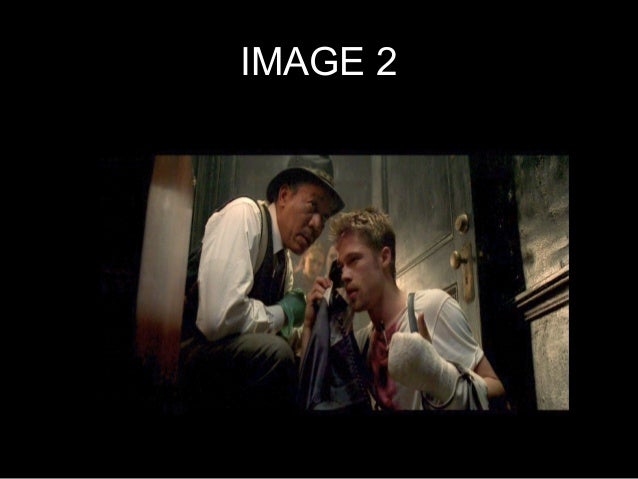
The man in the middle has his hands on his hips, which often signifies a demanding attitude. He may be thinking he is above everyone else, as he is dressed slightly differently from the other soldiers-telling us he may be in charge. He may think he is proud of himself. This leads us to believe the men either side of him are nervous around him. Their eye-lines are towards the ground, so they clearly don't want to look up, which could inform us they are feeling judged and are intimidated.
POSITIONING
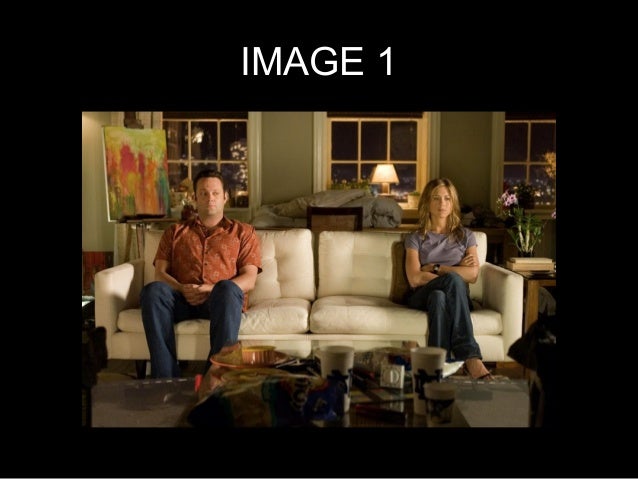
This first image suggests this film is about two characters with a love-hate relationship. They are positioned on opposite ends of the sofa, which could indicate they have perhaps had an argument or disagreement. Therefore, we may believe that this film is about a couple who try to resolve this problem, where they find it hard to get along.
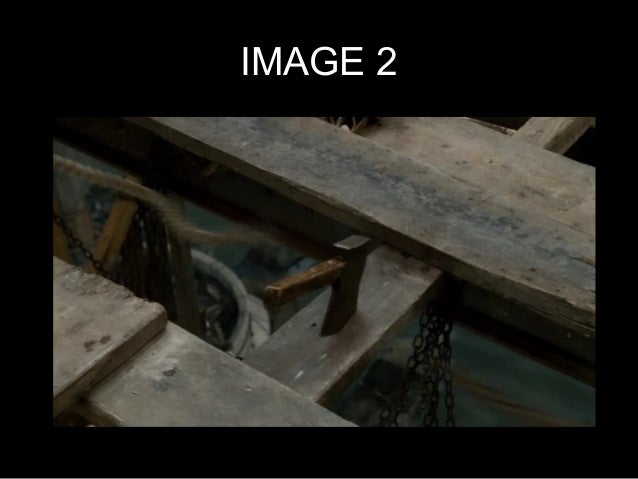 In this image, we are presented with the positioning of wood, rope and chains. Our first initial thought may suggests this film is set on a boat. We often associate planks of wood and rope as parts of a boat, or objects which are often found lying around in this setting. This further highlights this film may be set out at sea, or at least a part of the film features a similar setting.
In this image, we are presented with the positioning of wood, rope and chains. Our first initial thought may suggests this film is set on a boat. We often associate planks of wood and rope as parts of a boat, or objects which are often found lying around in this setting. This further highlights this film may be set out at sea, or at least a part of the film features a similar setting.
The positioning of the characters in image three present us with ideas of it being an action or Sci-Fi film. The objects the characters are holding are gun-like, but are not of the 'norm' we often see in films. These characters are seen holding them up next to each other, and are big objects-a way of telling us could be a Sci-Fi film. Also, the characters close positioning suggests they may have a close relationship in the film.
When we are presented with this film poster, we are immediately drawn to the figure positioned in the centre. It suggests they are the main character in the film and that we will be following their life throughout the film. Also, the positioning of the orange light in the background connoted ideas of fire. This could help us understand the film may feature acts of violence or war, or where something horrific happens in the film.
The shades of brown can often relate to vintage settings. The gold colours that are also featured, further indicate this film is set in a rich house-or mansion. The colour of the characters clothes and the fashion itself are not modern. The female is dressed in dull looking colours, whilst the man is in a black and white suit.This shows us it may be a film set in the early 1900s.
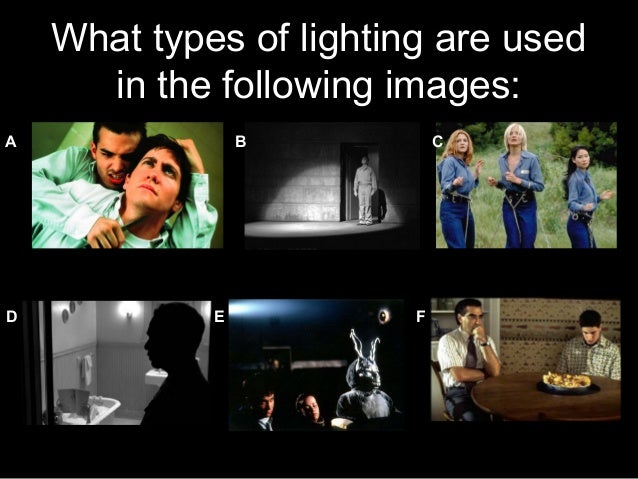
A) High Key lighting
B) Low Key lighting
C) High Key lighting
D) Low Key lighting
E) Low Key lighting
F) High Key lighting
KEY/FILLER/BACK LIGHTS

The key light is the lamp, the filler light is the light reflecting from the walls and the back light is coming in through the window.
The back light may create suspicion, as we are left to question what could be outside, because the light signifies it as being important. The key light draws our attention to the brightness of the lamp and its surrounding areas, which is the man face in the mirror. This is our focus point.
Type of lighting= Low Key
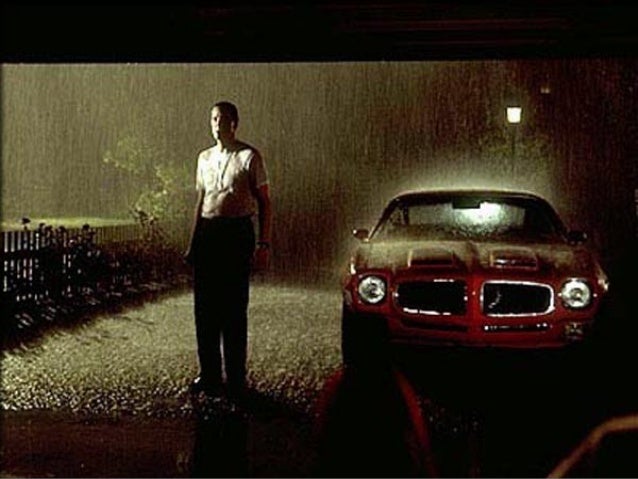 The key light is coming from the mans shirt, the filler light is the pavement beneath him, whilst the back light is shown behind the car.
The key light is coming from the mans shirt, the filler light is the pavement beneath him, whilst the back light is shown behind the car.The back light makes us think that there is something behind the car, creating a mystery element. Even though this scene is set at night, the lighting is used to allow us to see the rain. Because we know it is raining, it creates misery and also confusion or worry, as we are unsure of why the man is just standing in the rain.
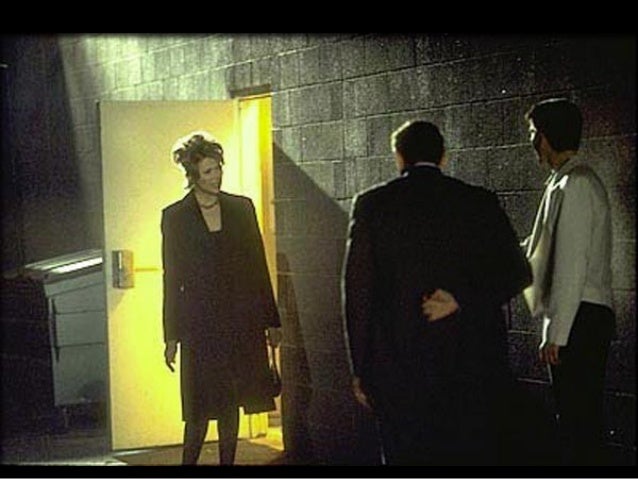 Type of lighting used=High Key
Type of lighting used=High KeyThe key light is the lighting shown on the door, the filler light is the light focusing on the men, and the back light is coming from behind the door.
Because the key light is positioned a certain way, it automatically sends our eyes to that area, which happens to be where a woman is also placed. This could lead us to believe she is of great significance, as the golden glow behind her creates imagery of high status.
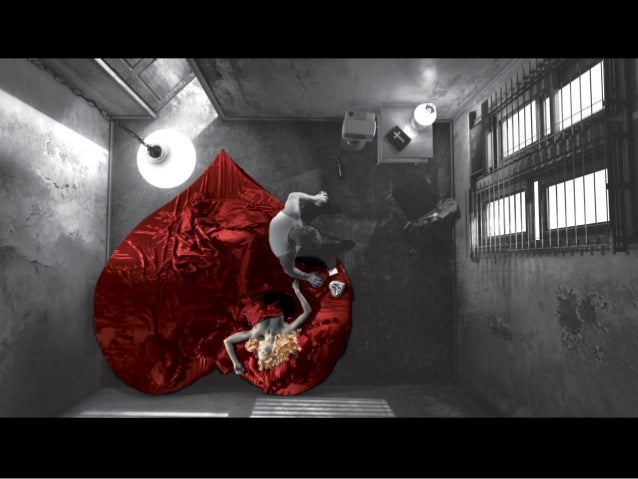
Type of lighting used=Low Key
The key light is the light hanging down, the filler light is the lamp on the table, and the back light is coming from the windows.
The light hanging from the ceiling impels our attention towards the red colour positioned beneath. The red colour connotes ideas of love and considering it is in a heart shape, reinforces this notion of romance. Because everything else in the room is dim-lit, it suggests that love is a strong force.
Monday 18 September 2017
Dancing Animals Premier
For my first practice footage, I used clips from James Bond and of dancing animals. My sequence starts off with James Bond. I then chose to introduce the song and the dancing animals, because it creates the impression they are dancing to the beat of the music.
The first effect I used was a faded effect, when the video transition from James Bond to the dancing animals.
Moreover, a clip of a plane had been added, which was then reversed as an effect, so that it evokes more interest, but at the same time confusion, as we wonder why it is going backwards.
In addition to this, to further my experimentation with effects, the colour of the video was also altered. Instead of retaining its original colour, I opted for the black and white effect. This creates a much more dull, sombre atmosphere.
Another video effect was a ripple effect, which changed the entire video clip; it wasn't a change in transition. It is more interesting than only changing the transitions, because it shows an advance in effects and can implies excitement. Also, it contrasts with the original image of clouds, as they move at a much slower, sedate pace.
Finally, I ended the sequence with James Bond, so that there is a relation between beginning and end. Some of the clips were also slowed down - where Bond jumps out of the window. This emphasises drama and creates more attention on the action taking place.
Thursday 14 September 2017
Media Vocabulary
Describe
In detail
Setting-location/time of day/weather
Themes-good vs evil/horror/death
Icons
Narrative-plot
Characters
Textual analysis-camera/editing/layout/mise en scene/sound
Mise En Scene
- Costume
- Lighting
- Actors =C.L.A.M.P.S
- Makeup
- Props
- Setting
Language
Industries
Audience
Representation
Denotations-the primary meaning of something/what something is
Connotation-what something means/tells you/the hidden message
Film Poster Semiotics
The denotation of the Star Wars film poster suggests that this film is based in space, due to the title 'Star'. The second part of the title 'Wars' indicates imagery of conflict, resulting in a battle. This further stimulates imagery of fighting. To reinforce this, the characters situated at the top of the poster look as though they are holding sword-like weapons, along with the characters below them carrying guns.
In addition to this, the character in the background is wearing a mask, which connotes thoughts that he could represent the evil in the film. Also, because you cannot see his face, it creates mystery, and could suggest that a big part of the film is finding out who is under the mask. The character is a darker colour than the rest. When we see darker colours, it is usually for negativity and could provide us with a reason to believe this film may have an unexpected ending.
In this film poster, the girl is centered in the middle of the poster, evoking ideas that she is the main character, leading us to believe the story line could be based around her. It could connote that in this movie, we see her the most, and she is the character the directors want us to feel closer to.
Another one of the main denotations is the use of red and blue colours. The connotation of the red colour is often a representation of blood, anger or hatred. It can also be a way of connoting fear. However, the blue is a more calming colour, stimulating more relaxation and less fright. The contrast between the two colours holds the connotation that this film presents the typical 'good vs evil' element.
Moreover, in this poster, there is a denotation presented by the use of the light-sabers, the space ship and having the setting in space, all of which convey the connotation of this film falling into the Sci-Fi genre.
Monday 11 September 2017
Summer Transition Work
TASK ONE
 The use of dark colours
connotes thoughts of fear, which may further suggest there is an element of mystery to the film.
The use of dark colours
connotes thoughts of fear, which may further suggest there is an element of mystery to the film.
In addition to this, because there is no use of brighter colours, it leads us to believe that it may not be
a very happy film.
To reinforce this, the number two has been coloured red. We often associate the colour red with blood or anger, which informs us that this movie may contain violence and death. The notion of violence is also shown, due to the placement of blood on the man's face, suggesting he may be in danger or will get hurt. It could be a way of telling us that this is not a film for younger people.
The man in the middle is surrounded by
guns, which also evokes thoughts of violence, suggesting it is not a child-friendly
film.
Furthermore, in this poster, we can only see the face of the man in the middle. This carries the connotation of him possibly being the main character in the film. Because he is placed as our focus point, we immediately are drawn to his attention and are captivated by the stare he is giving. His facial features suggest he is a serious man who isn't one to annoy.
TASK TWO
The director/producer has thought about their use of colour to evoke feelings amongst viewers. Throughout the trailer, majority of the colours consist of earth and neutral tones, involving brown and grey. When we see these colours it doesn’t strike as a cheerful film, but one that is more serious and may not have a happy ending. Another way in which the director/producer has used colour is when they have tried to capture our attention in clothing. Diana (Wonder Woman) in one scene is wearing a blue dress. In this scene everyone else is seen in much lighter colours, so our attention is drawn to her. This is the directors way of highlighting that she is the main character and that she plays a huge role of importance in this upcoming film. In this trailer, it is only in the beginning when we see a much brighter use of colour in the sea, which stands out. It could have been used to create a calming atmosphere and to ease us into settlement. However, as soon as the trailer goes on and the scenes contrast into darker colours, it disrupts our thoughts into chaos. This could create imagery of being a part of the action, which is what the directors or producers may have wanted to happen to get us to want to watch the film.
TASK THREE

This use of media has a negative outcome on society. It depicts views that we need to be skinny and beauty, with aspiring features that majority of people don’t have. It can cause many health problems, proving that media doesn’t have a good role to play towards people sense of gender and identity.
However, ‘This Girl Can’ campaign, advertises the opposite, demoting a much more positive view. This advert helps people to realise they’re beautiful inside and out, and we don’t need to be driven to look a certain way. This has an important role in media and shaping our opinions on oneself.
TASK FOUR
The ‘Big Six’ in media are the 6 main companies who essentially own 90% of all media in the world.
COMPANY
|
WHAT COMPANY’S THEY OWN
|
Disney
|
· Pixar
· ABC
· Marvel Studios
|
ViaCom
|
· MTV
· Nick Jr
|
Time Warner
|
· CNN
· Warner Bros
|
News-Corp
|
· Fox
· New York Post
|
GE
|
· NBC
· Comcast
· Universal Pictures
|
CBS
|
· Showtime
· NFL.COM
|
Subscribe to:
Posts (Atom)
Why do long form dramas from different countries offer different representations?
Long form television dramas (LFTVDs) are influenced by social, cultural, economic, political and historical contexts. Social contexts inclu...
-
STEVE NEALE (1980) He follows the belief that genre relies on repetition and differences. For example, in some films the elements may be ...
-
LANGUAGE: technical, visual, audio codes, narrative, genre In the Gillette advert, there is music played, instead of hearing voices from ...
-
Long form television dramas (LFTVDs) are influenced by social, cultural, economic, political and historical contexts. Social contexts inclu...





